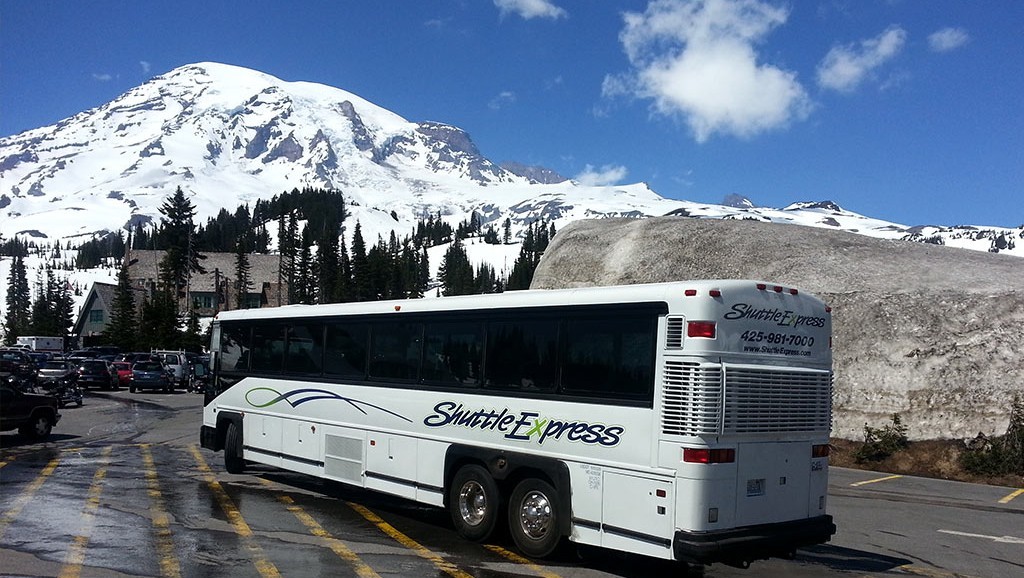Here are 10 tips for capacity and car selection for employee shuttle transportation:
1. Think about the needs of your employees for transportation.
Begin by conducting an in-depth analysis of your employee base in order to figure out the amount of employees who use the shuttle service on a regular basis. Consider factors such as the size of your workforce, the work shifts and the most popular times to use. These factors will help you determine the vehicle's capacity and make sure that shuttles can accommodate a variety of passengers numbers.
2. Select the right type of vehicle
Choose a vehicle that is best suited for your shuttle service depending on the number of employees and the specific requirements. Select between vans and minibuses as well as larger buses. Minibuses work well for smaller groups and be used in tighter spaces, whereas larger buses are suitable for large-capacity requirements. If employees are traveling with luggage or bags, consider the design of the vehicle and whether it has comfortable seating.
3. Evaluate Fuel Efficiency
The cost of fuel can affect the overall budget for shuttle services. Prioritise fuel efficient cars when selecting vehicles in order to reduce operating costs. Electric or hybrid vehicles should be considered as well, since they provide long-term savings as well as are in line with sustainability objectives. Analyzing the fuel efficiency of different models can aid to make an educated choice that balances capacity with cost-effectiveness.
4. Be aware of accessibility features
Verify that vehicles are in compliance with accessibility standards in order to accommodate disabled employees. This includes features such as wheelchair lifts and low floors that make it easy to get in, or designated seating for people who have mobility issues. The provision of accessible transportation not only meets legal requirements but also fosters an inclusive workplace.
5. Plan for Growth & Flexibility
The workforce size may change with the growth of organizations. When choosing the right vehicles for your company it is important to consider the possibility of the future growth of your business. If you choose to invest in vehicles that can be configured to accommodate different employee numbers, or have the capacity to expand seating capacity This will give you the flexibility to adjust to the changing workforce without needing to replace the vehicle frequently.
6. Find safety ratings, features and reviews
Safety is the top priority when it comes to the transportation of employees. Find out about the safety attributes and rating of vehicles before selecting one. Look for cars with the most advanced safety features, including antilock brakes, for instance, and stability control. Also, ensure whether all safety regulations are adhered to by the vehicle, to ensure employee protection during transit.
7. Assessment of Reliability and Maintenance
Choose vehicles known for their reliability and low maintenance expenses. If your vehicle requires frequent repairs could cause interruptions in shuttle service and employees to be dissatisfied. Also, you can create a maintenance program to maintain vehicles in optimal conditions and prolong their life.
8. Use GPS as well as Fleet Management Software
Implementing GPS trackers and fleet management software can improve the effectiveness of shuttle services. These tools can track vehicles in real time and optimize routes based on the conditions of traffic and schedules of employees. Fleet management software helps monitor the efficiency of vehicles and consumption of fuel, and also maintenance requirements to ensure the vehicle is being used in a productive manner.
9. Employee Feedback Systems for Employee Feedback
Encourage employees to provide feedback regarding the comfort of their vehicles and capacity by completing surveys or suggestion boxes. Understanding their experience can help identify overcrowding issues as well as accessibility or seating issues. Reviewing feedback from passengers regularly will assist in making the necessary changes in vehicle selection or service to ensure a positive transportation experience.
10. Total cost of ownership The budgeting process for the total cost
TCO is a measurement of the total cost for owning a vehicle. It covers the cost of fuel, depreciation, maintenance, and insurance. TCO analysis can help you make an informed decision that balances beginning investment and long-term operational costs. When you evaluate all costs that come with a vehicle, your organization can choose one that fits within budgetary limits and has the required capacity and reliability.
With these suggestions businesses can choose appropriate vehicles and manage the amount of shuttles for employees providing a safe comfortable, efficient, and comfortable service that is able to meet the requirements of their workforce. Follow the top this post on employee transportation for website tips including pick up service airport, transportation for airport, airport transfer services, car service transportation, san airport shuttle, airport shuttle pickup at home, shuttle bus near me, private transportation from atlanta airport, shuttle bus service, transportation for airport and more.

10 Ways To Improve The Customer Service And Communications Of A Corporate Transportation Service
Here are 10 suggestions for increasing customer service and communications in a corporate event transport service.
1. A Transportation Coordinator who is dedicated
Designate a designated transportation coordinator who will oversee every aspect of transportation services during the event. This individual should be the primary point of contact for all transportation-related inquiries, ensuring that attendees have access to timely and accurate information. A designated coordinator can facilitate communications and enhance the customer experience.
2. Clear and complete
Be sure that guests are aware about all relevant transportation details at a sufficient time prior to the event. Include information about the pickup location (including schedules), the types of vehicles, contact details as well as any other relevant details. This will help attendees better plan their journey and reduce confusion during the actual event.
3. Utilize Multiple Communication Channels
You can make use of a variety of communication channels in order to contact attendees. This can include email, mobile applications, event websites and printed materials. Different channels are crucial because attendees may prefer different communication methods.
4. Create a Transportation Questionnaire
Create a frequently asked questions (FAQ) document that addresses the most frequent concerns and queries relating to transportation. This document can include information about accessibility and lost items, emergency contacts, as well as other pertinent issues. The use of FAQs can assist in reducing the amount and complexity of questions. They also improve the user experience.
5. Receive real-time updates
Develop a way to inform attendees in real time regarding the transport schedule or any modifications. This could be in the form of SMS message alerts or notifications via a mobile application. The real-time updates help to control expectations and keep attendees in the loop, especially when delays are possible.
6. Train drivers in customer skills in service
Drivers should receive comprehensive training that includes customer service. The drivers should be friendly and approachable. They should also possess a good knowledge of the event. Positive interactions will make the participants feel valued and appreciated by the drivers.
7. Get feedback during the event
Create an opportunity for attendees to offer feedback on the transportation during the event. You can use quick surveys or comments cards, or even informal discussions to collect feedback. The information collected in real-time permits immediate adjustments to be made, and also shows an ongoing commitment to continuous improvement.
8. Ensure Accessibility for All Attendees
Communication of accessibility features in the transportation service must be clear. Make sure that the vehicle is accessible to persons with disabilities, and that accessibility information is easily available. Making accessibility a priority will demonstrate your commitment to inclusivity. It can also improve the experience of everyone attending.
9. Follow-up After the Event
When the event is over Follow up with the participants to express appreciation for their participation and collect feedback on their transportation experience. Surveys via email or thank-you notes can be used for this. Following up shows that you value their feedback and that you are dedicated to improving the future of your events. This builds positive relationships with the participants.
10. Document Lessons for Future Events
Note any lessons you learn about customer service or communications. You can apply them in the future. Make use of the feedback to improve the next time you host an event. Continuous improvement in customer service can improve the quality of events and higher satisfaction.
These tips can help organizations improve their communication and customer service for transportation services for corporate events. A clear and concise communication strategy, dedicated assistance, and prompt feedback mechanisms can ensure an enjoyable, seamless experience for attendees. In a highly competitive marketplace, exceptional customer service can make an organization make an impression. It fosters lasting relationships with event attendees and enhances their experience. Have a look at the best corporate event transportation blog for blog recommendations including transportation logistics services, transportation companies near me, safe transportation, transport comp, transport services near me, logistics transportation services, logistics transportation, global logistics, specialized transportation inc, transportation industry and more.
